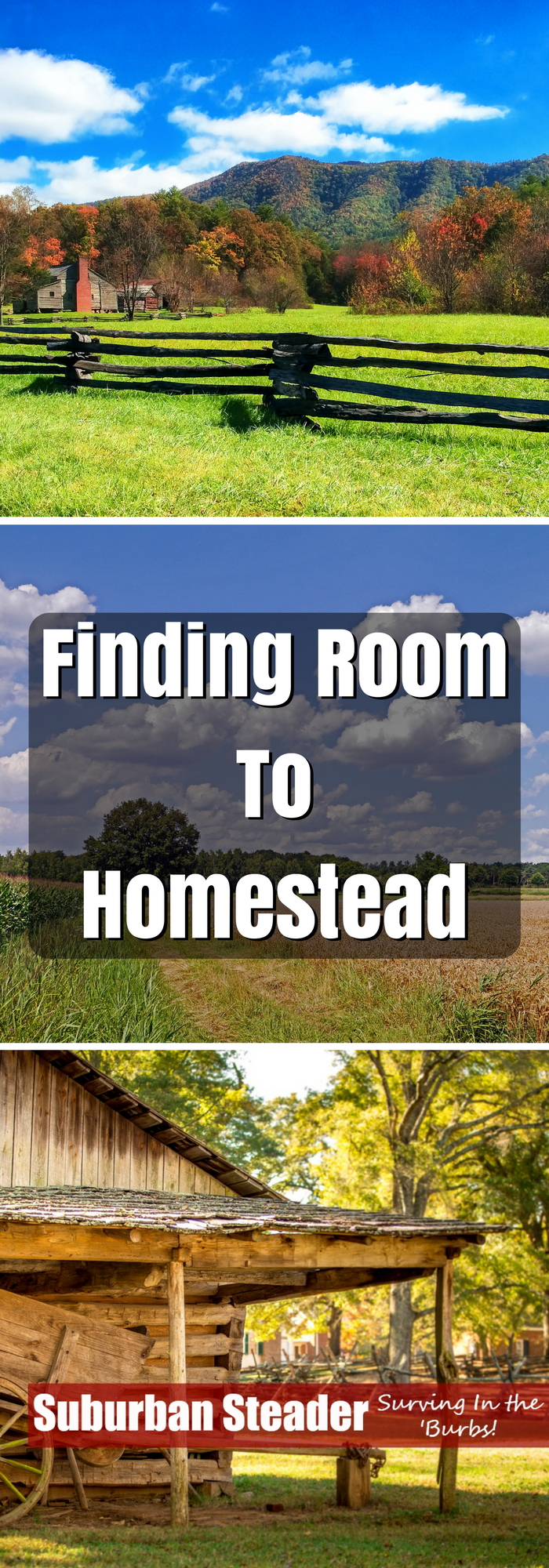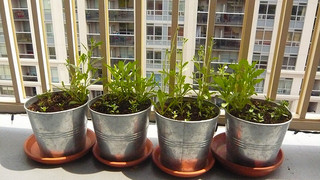Finding Room To Homestead
Suburban homesteading is a different animal than normal homesteading. Finding room to homestead can be a tricky task for the typical suburban homesteader, especially those who live on small plots of land or in apartments. Granted, if you live in the suburbs but have a large plot, this task may be easy for you.
Those of you with minimal to no land need not fret – we’re here for you. This article will help you find room to homestead on your lot. We’ll use our lot as an example and concentrate on three main areas:
- Lawns
- Container Gardens
- Areas Beyond Your Yard
Lawns
A lawn is one thing most suburban homesteader have at their disposal. Even if you live on a small lot, there’s a lot of room to homestead on that nice green carpet you have.
But how, you ask? That’s simple – landscape integration!
Even though it’s a lot of land from a homesteading standpoint, your lawn is something many suburban homesteaders don’t want to completely get rid of. Plus, what would the neighbors think?
First, forget about the neighbors. They don’t pay your rent or mortgage, so what they think doesn’t matter (unless you are unfortunate enough to live in an HOA). If you’re really concerned about your neighbors, you can keep your front yard untouched and hide your homesteading in the backyard.
Second, realize that you can incorporate homesteading into your lawn in a way that is aesthetically attractive while still functional.
Here’s a few examples of how you can incorporate homesteading into your lawn:
- Incorporate bushes (blueberry, strawberry, etc) into areas where you’d normal put box hedge or other partioning bushes
- Place fruit trees in areas you want to create shade
- Build garden boxes and raised beds into your landscape rather than large inground gardens
- Stick with hens if you are going to have chickens (and build an attractive tractor for them)
How We Use Our Lawn
We follow most of the suggestions above at the Suburban Steader homestead.
First, we do not have an in-ground garden. All of our gardening area is built into the landscape as raised beds. They allow us to landscape around the garden and provide a more aesthetically appealing element to the backyard.
Second, our backyard is fenced off and we have mulch beds around the majority of the fencing. We have been planting many perennial plants like strawberries and blueberries in these areas. This approach stacks functions as it puts an aesthetically pleasing plant in the mulched area and also provides an additional food producers. If I’m going to maintain a plant, I’d prefer that it produces food for me.
We have primarily worked in the backyard. The front yard is currently untouched but we do have plans for it. As we clean up the remnants of the former owner, we do plan on putting in some fruit trees – probably apple – in the future as well as some more “fedge” (food hedge) type plants on the peripherals.
Container Gardens
You’re not out of luck if you don’t have a lawn. You can still find room to homestead with container gardens. A sunny balcony, stoop or window can provide more room than you think for growing food. You’ll obviously be limited to what you can grown, but if you center on herbs and easier to grow plants like tomatoes and peppers, you’ll do just fine.
The one thing you need to pay attention to with container gardening is light. South facing areas will get more sun than others, but you can work with just about any light source. Do a little research on what grows best with the amount of sun you’ll get.
Soil will also be a concern. You don’t have the advantage or having seemingly limitless nutrients from the ground so you need to be sure to use a good soil full of organic matter at the onset and then supplement it with something like compost tea (we’ll talk about that later on in this series) on a regular – probably monthly – basis.
How We Use Container Gardening
Our use of container gardening goes back to the aesthetic approach. For the most part, the Suburban Steader homestead uses container gardening for easy access items like herbs. We place containers on the wall of our patio during the summer and grow items such as oregano, basil, parsley, rosemary and mint in them. These items are easily accessible when we are cooking (especially when cooking outside) and provide a fragrant aroma to our patio area.
Areas Beyond Your Yard
Taken up all the space your little window and stoop offer and want to do more? Here’s a few places you might be able to find room to homestead away from your home:
- Community gardens
- Empty lots
- Neighbor’s lots
- Churches or schools
Definitely talk to the folks who own the land before you go ahead and start homesteading on land that isn’t yours.
I want to make a point that, while we have talked almost exclusively about gardening, homesteading isn’t all gardening. You can do a lot of other suburban homesteading tasks like canning, cooking and food storage if you don’t have a piece of land to garden on.
How We Expand Our Homesteading
The Suburban Steader homestead is currently confined to our lot. We haven’t expanded much beyond our quarter acre other than to build community.
Wrap-Up
So there you have it – how to find room to homestead. Most of these steps are pretty easy. Take a look at your own little spot in life and see how you can tweak it to your needs.
Please let us know any tips you have for finding room to homestead in the comments or on our Facebook Page.
photo credit: Al_HikesAZ via photopin cc


